Interboro (Jackie Robinson) Parkway
Opened in June of 1935, it took a significant amount of time to come into existence due to the fact that it cut through cemeteries and residential real estate, requiring the relocation of burial sites and razing of homes. In fact the sharp curves of the Interboro are due to the route which was selected to minimize the number of burial plots which had to be relocated. It was renamed the Jackie Robinson Expressway in 1997, on the 50th anniversary of his breaking the color line. Jackie is buried in Cypress Hills.
. |
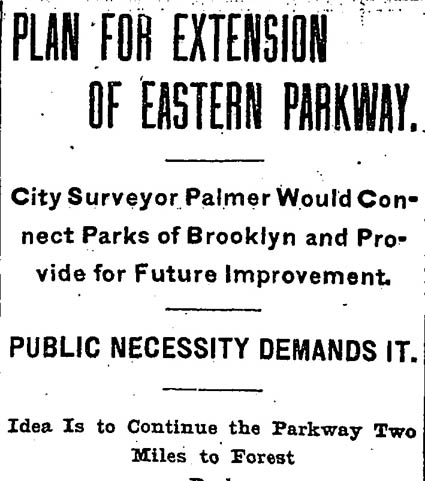
|
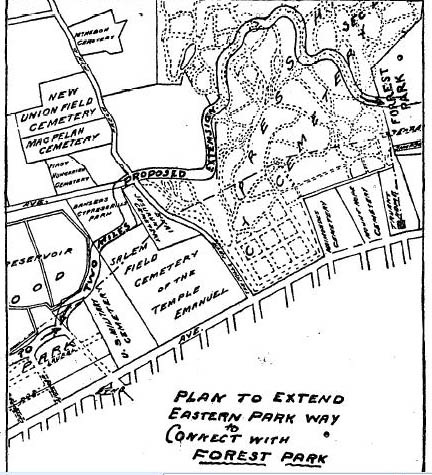
|
Eastern Parkway Extension, 1901
Proposals for the Interboro date back as far as 1897; in the early days the concept was based on having a 'boulevard',
an extension of Eastern Parkway, that would form a connection between Prospect Park and Forest Park. This 1901 Eagle article outlines the original design concept, which would extend Highland Boulevard and pass the south side of the reservoir before winding through the cemeteries. |
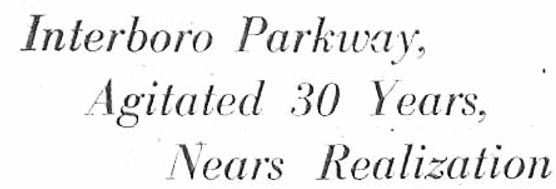
|
This headline comes from 1927; although there is demand for the Parkway, several issues prevent the necessary legislation from ever getting passed. Land needed to be acquired from the cemeteries, and once it became evident that re-interments would be necessary several lawsuits were filed to stop the process. In addition there was a significant debate over who should
pay for the extension; originally local landowners were to be assessed but this faced fierce opposition as well. |
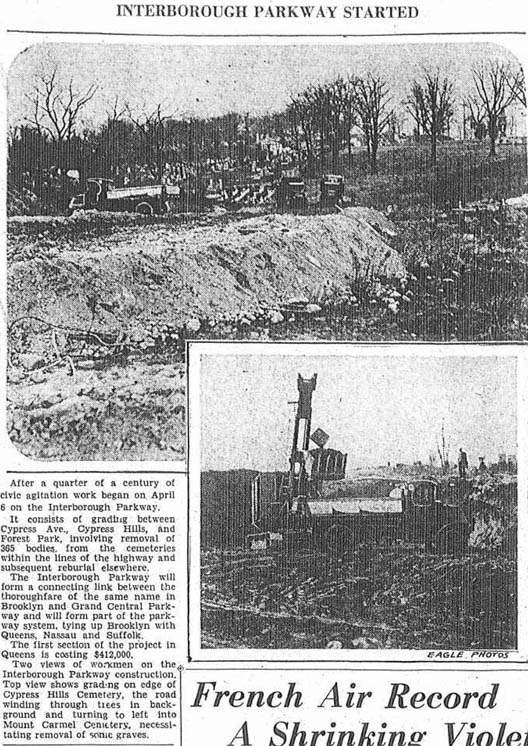
|
The April 14, 1931 Eagle notes the beginning of work on the Interboro and includes some photos. |
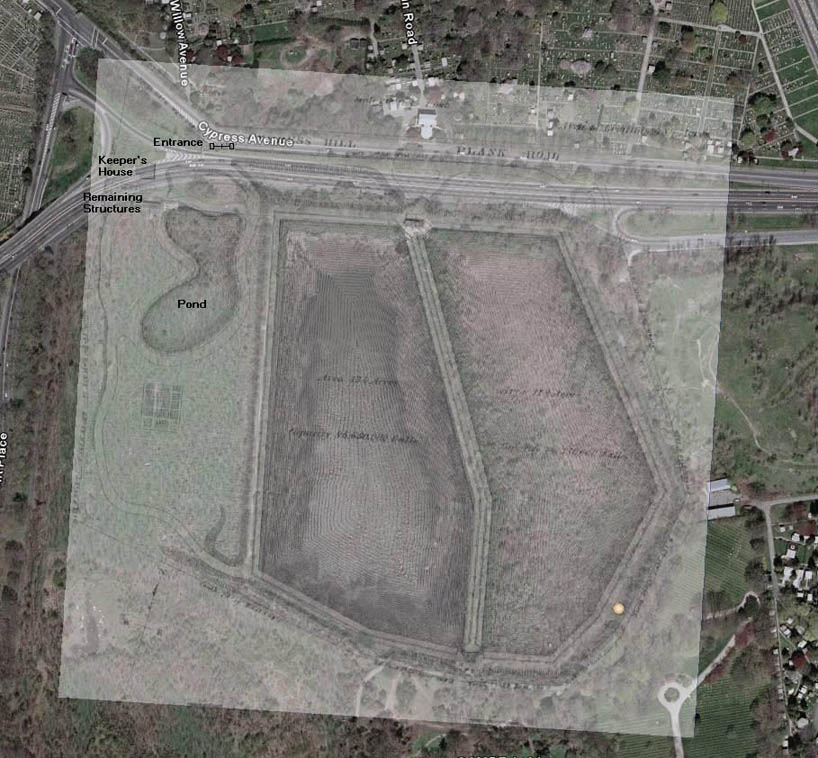
|
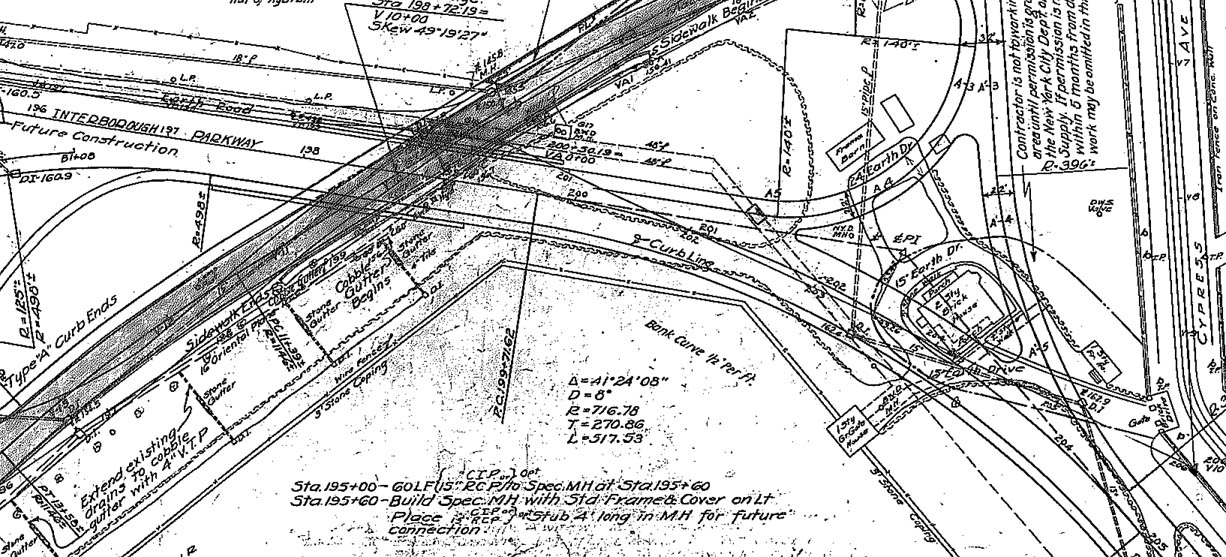
|
Keeper's House, Ridgewood Reservoir
The design of the road led to the elimination of the original keeper's house for the reservoir. Anthony Messina first advanced the theory with some nice overlay work on the left, and subsequently blueprint plans on the right confirmed the theory . |
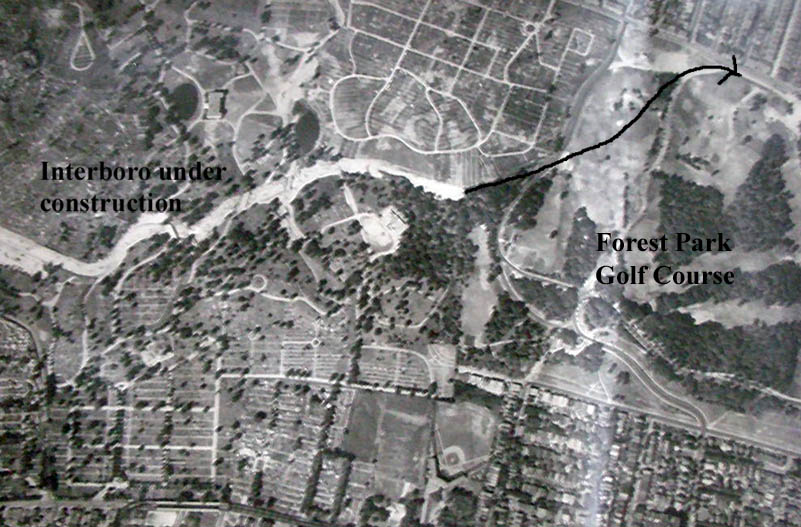
|
This 1932 aerial image documenting the work shows they started on the section cutting through the cemeteries first. It also shows one of the design roadblocks; the black arrow I drew shows the intended path of the Parkway. It cuts right through the existing Forest Park
golf course, and necessitated the rearrranging of three holes. Near the bottom of the image you can see Dexter Park. |
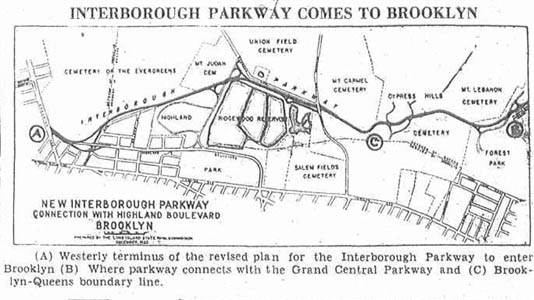
|
Apparently there was still some debate even by the end of 1933 as to how the western end would be completed. The original plans had the Interboro only picking up
from Highland Boulevard, but then it was agreed to extend it further west, rebuild the Vermont viaduct, and carry through to Bushwick Avenue. |

|
The first mile of the Interboro is dedicated on April 14, 1935. The City also dedicated Alley Pond Park in Queens on that day, a sister project, and Babe Ruth is there for the dedication. There are several more dedications, culminating in November when the entire Parkway is opened. It doesn't take very long for everyone to figure out it is a deathtrap, but oddly the focus is on the poor lighting. At this point, there is no median divider between oncoming traffic, only a painted white line! The divider, which is only a foot high, doesn't come along until 1942. |
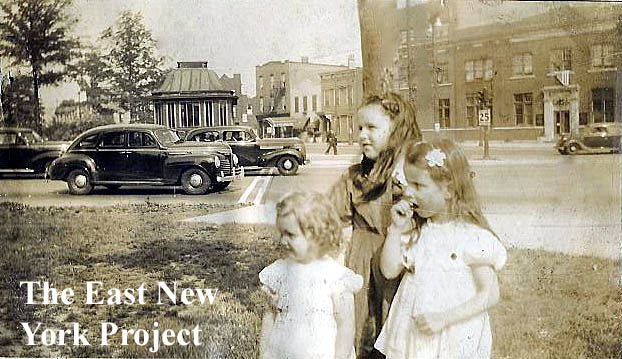
|
Interboro entrance, Jamaica Avenue 1930s
Jack Auld sent this image taken by the entrance in the 1930s. There was some speculation that the booth in the background might have served as a tollbooth, but I have researched this and no tolls were ever collected on the Parkway. These booths were built for the Long Island Parkway traffic patrol, and
contained radio and rest facilities. |
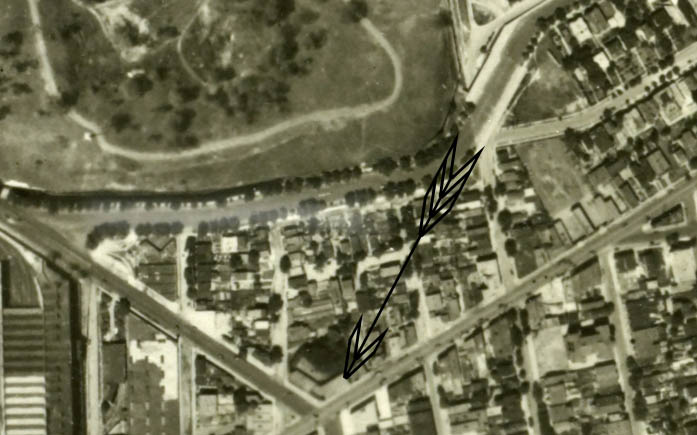
|
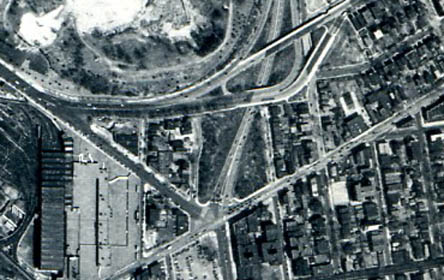
|
Interboro, western terminus
The extension to Pennsylvania Avenue was no small matter. As seen in the 1924 aerial photo on the left, the arrow marks where the Pennsylvania Avenue exit would pass. Not only were there a number of residential units
to clear, but on Jamaica Avenue stood the old Weitkopf brewery. That brewery had long since closed, and was deployed as a soapmaking factory around 1913, then a distillery before closing during prohibition. The owners received about $130,000 in the condemnation proceedings, the largest of the property awards. The 1951 aerial on the right serves as an 'after' image, and it appears the police booth is gone. |
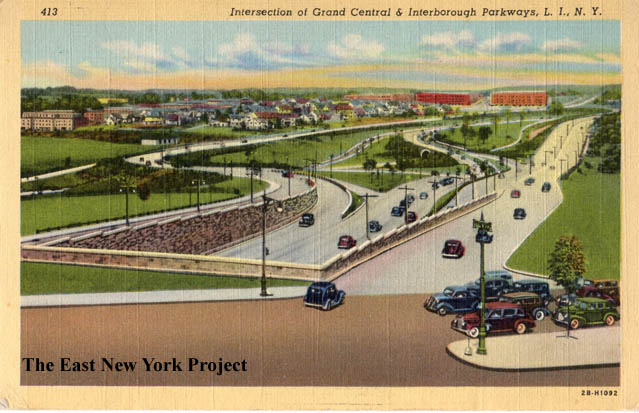
|
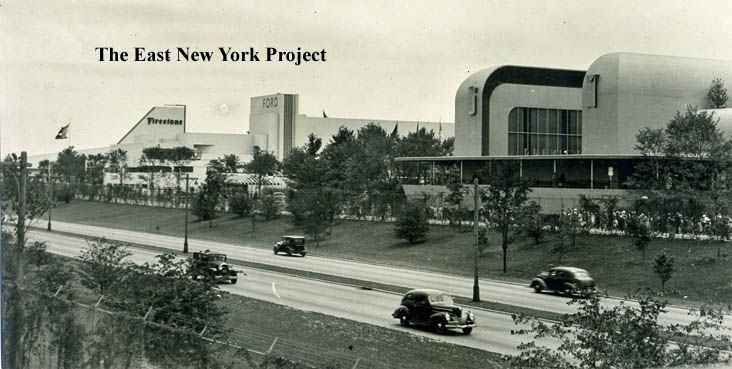
|
This post card was issued circa 1943 by the Interborough News Corp. A lot of the impetus for the road improvements including the Grand Central Parkway came from the planned 1939 World's Fair in Flushing. On the right is a view of the Grand Central Parkway during the 1939 fair. |
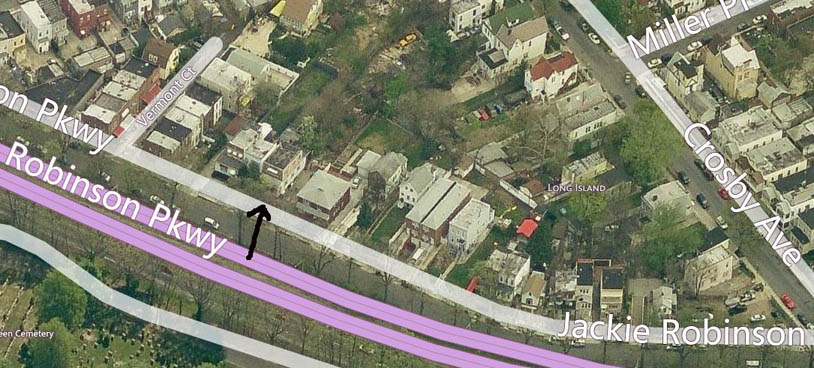
|
What many people probably don't know is that there a few homes that carried the Interboro Parkway as an address. Wes Kent recently clued me in because his grandfather built his home in 1915 at what was 106 Interboro Parkway! In the picture I have an arrow pointing to the house today. At the time it was built, the road was "North Vermont Street." Wes provides some recollections:
"My grandfather began the construction of what was to be a two story home at 106 Interboro Parkway, in 1915. It stands today. It was a many years project with my father Wes and his two brothers, Howard and Herb, and sister Doris helping. They lived in a covered basement foundation as the construction progressed. My grandmother's sister married Harry Peterman, who built a home on a lot two away, towards Highland Park. Harry Peterman founded the Peterman Paint Company, located next to the Brooklyn Bridge. Our neighbors were Mr. and Mrs. Sigismund Trapani. He was a retired attorney and city alderman. Wonderful people. Mrs. Trapani would send over a special Christmas dish every year.
There was a pharmacy and a neighborhood grocery store on Interboro Parkway, near our home, and just up from Bulwer Place. I don't remember the pharmacy being open, but the grocery was in operation into the late 1940's. Google maps shows the rectangular building is still there.
Further on down the street, past my grandparents home, there was a lot with a concrete wall and wooden door, that was a nursery or green house before WWII. It was near the Ackerman's home. Lee Ackerman was a friend who I lost contact with years ago. Does anyone have knowlegde of his whereabouts?
Charles Fries and family lived at the curve of Interboro Parkway. He was a teacher and electronics wizard. His basement was something out of a sifi movie. I had a pigeon coop on the roof of our home until my father heard the cooing of over 100 birds one Saturday morning. I moved the birds to a coop in back of the Fries home and continued a challenging hobby for years." |
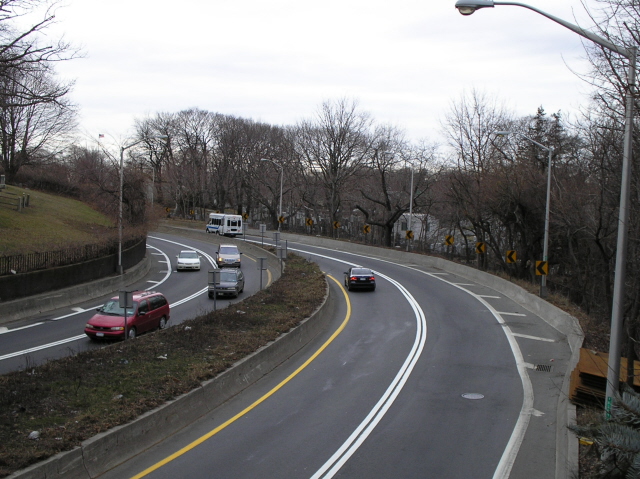
|
"The curves"
The infamous curves of the Interboro, created by the intention of minimizing re-interments in the cemeteries, were the cause of numerous accidents. About 1975 a major improvement was implemented that involved widening the shoulders,
grooving the pavement, and higher medians. |
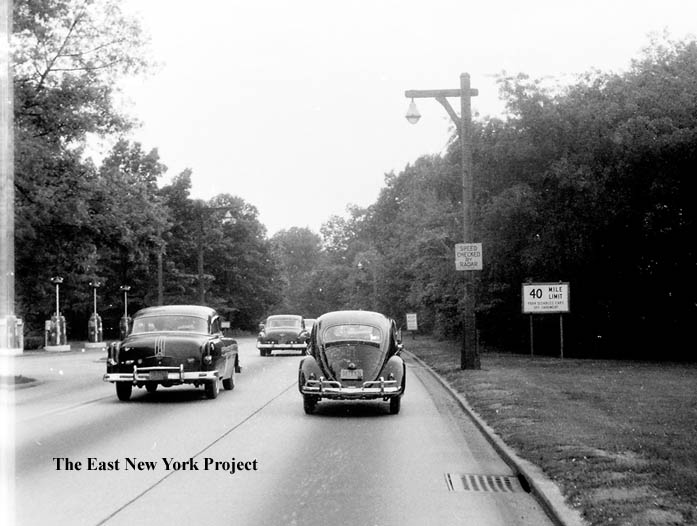
|
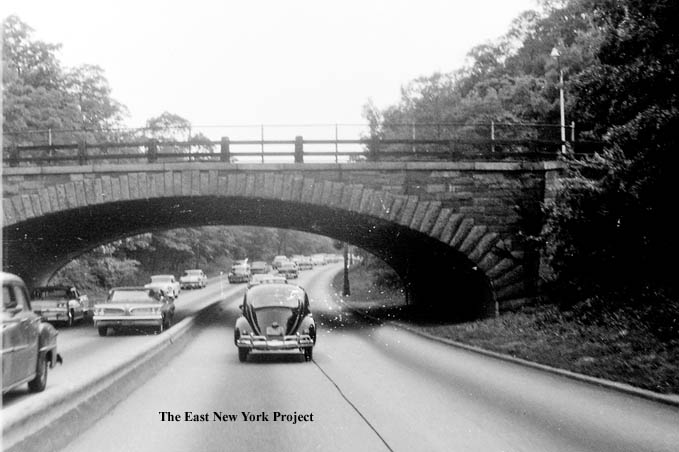
|
Interboro Parkway, 1950s
These were the images that prompted me to put together this page. They come from Gloria (Profeta) Gallaway and the one on the left shows the gas station that used to exist on the Parkway, now removed. On the right we see the low median that seperates oncoming traffic, installed around 1942. |
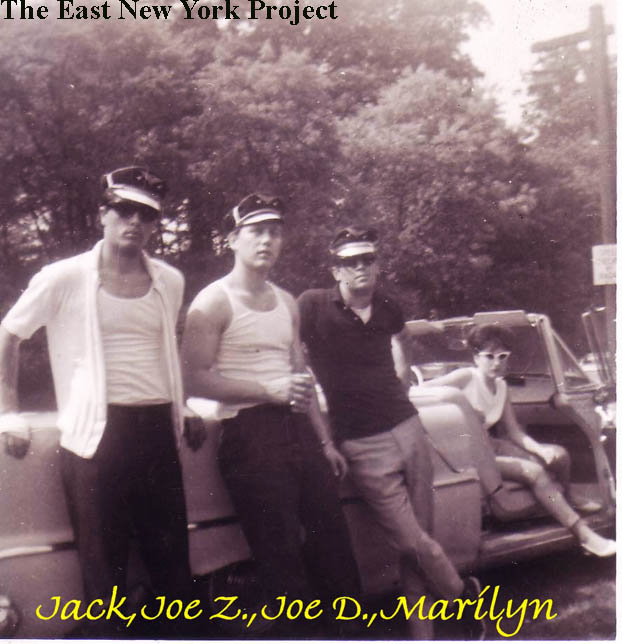
|
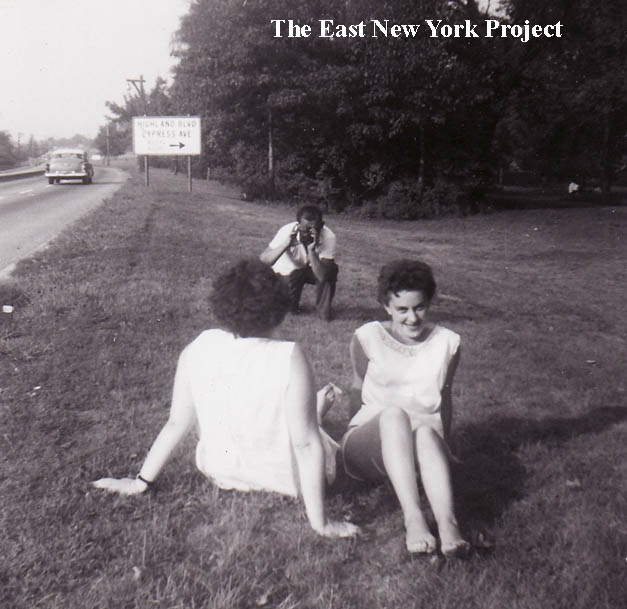
|
Interboro Parkway
It seems odd to take pictures near the Interboro but Jack Magat sends this 'stylish' shot from 1962 and JoAnne Montgomery supplies a picture from roughly the same era both taken near the parkway. |
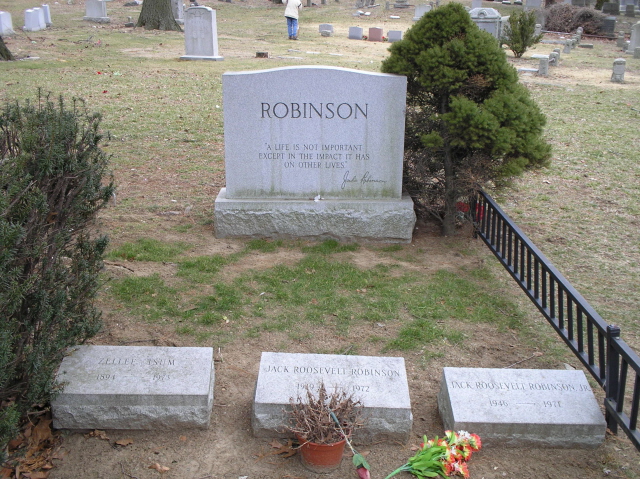
|
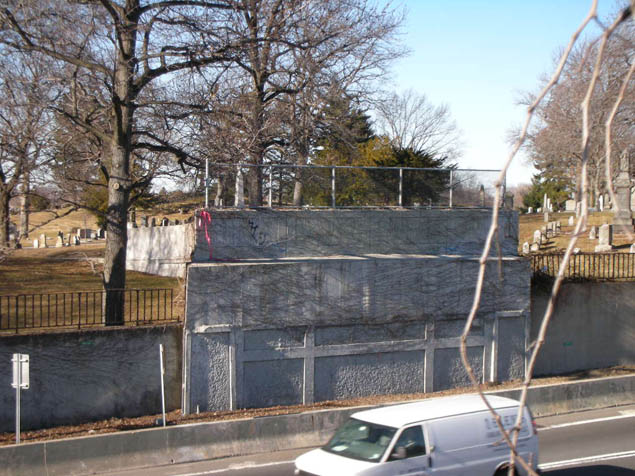
|
Jackie Robinson Parkway
In 1997 the City changed the name of the Parkway to the Jackie Robinson Parkway, in honor of the 50th anniversary of Jackie breaking the color line in baseball. Jackie is buried on the Queens side of the cemetery. The Parkway, which splits the cemetery, required the building of several bridges within the cemetery itself. However, when these bridges began to deteriorate, there was a dispute over who held responsibility for their maintenance. The City wound up removing the bridges to end the dispute in 2008. |







